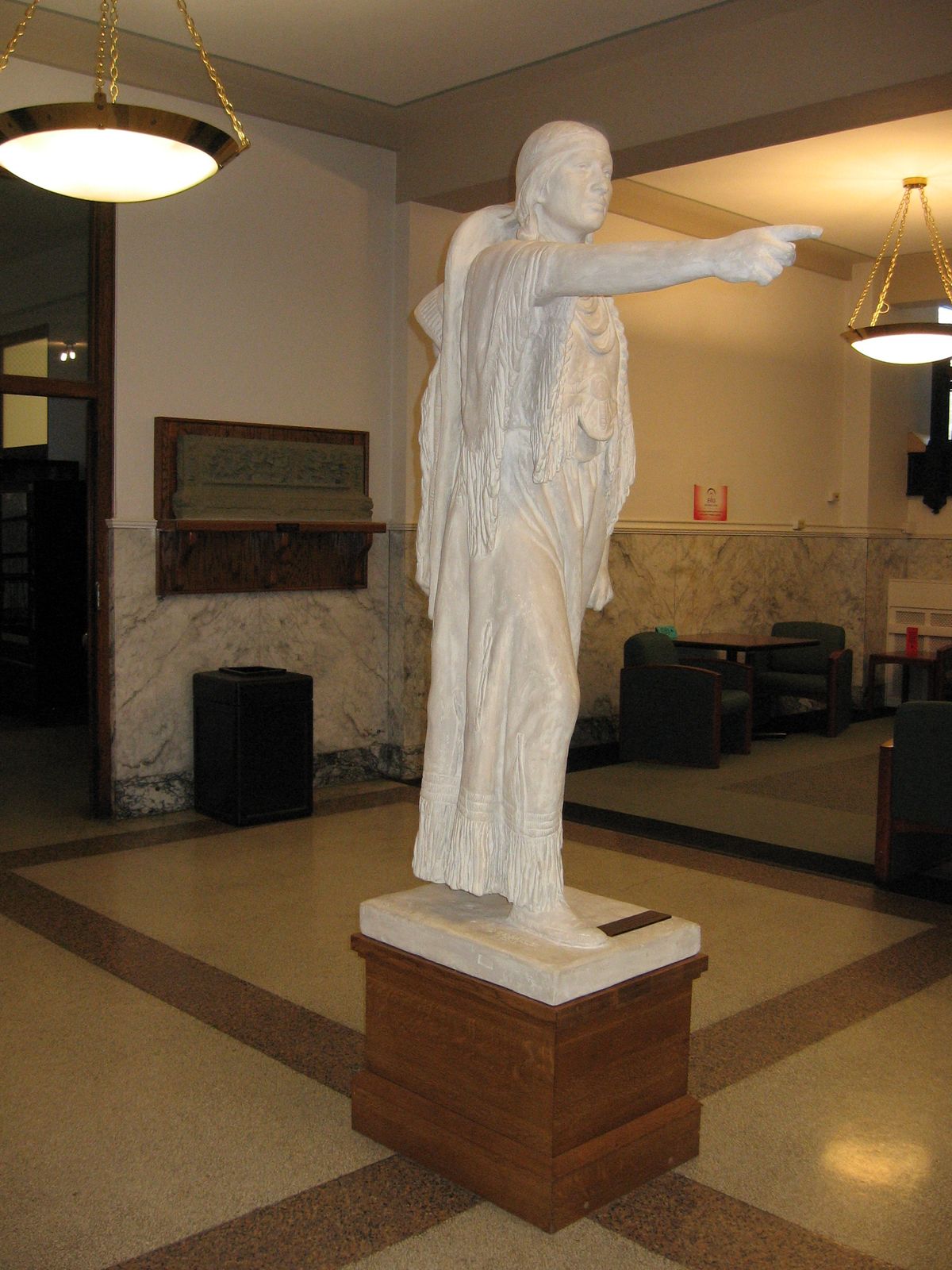Eastern’s story of two statue Sacajaweas; one battered, one stolen

This is a story about the two Sacajaweas at Eastern Washington University – one being the larger-than-life plaster statue that came to Eastern in 1916; the other a smaller bronze statue that arrived in 1960 and was stolen in the dark of night in 1997.
When the state Normal School at Cheney, which would later become EWU, opened in 1882, its mission was to prepare people – mostly women – for careers in the classroom, one of the few professions available to women in those days. When a new administration building was built in 1915, the graduating class of 1916 chose to give a gift to the school – a statue of Sacajawea.
Sacajawea was chosen because the Lemhi Shoshone woman who served as a guide and interpreter for the Lewis and Clark Corps of Discovery expedition in 1804-06 appealed to the class as an ideal representation of what they themselves were embarking to do – be leaders and teachers of others, said Charles Mutcshler, university archivist.
They purchased the 6-foot-tall statue created by American sculptor Cyrus Edwin Dallin, who was noted for creating statues of American Indians and other historic American figures. His “Appeal to the Great Spirit” statue of a Native American on horseback and with arms raised to the sky remains today at the Boston Museum of Fine Arts and his Angel Moroni sits atop the Mormon Temple in Salt Lake City. The Cheney Normal School students couldn’t afford the bronze version of Sacajawea, so they opted for the plaster statue.
The image of the Shoshone woman heroically pointing the way forward was supposed to be installed on the main floor of the administration building in time for commencement ceremonies, but it arrived late; installation was held later, on June 9, 1916. Over the years, Mutschler said, people came to pose for pictures with Sacajawea in the administration building, which in 1940 was renamed Showalter Hall, and the statue began to look weathered. And that outstretched arm also proved too tempting to resist – luring many to hang from it or do chin-ups.
Plaster is soft and fragile, Mutschler said, so sometime in the 1950s, the arm broke off. In 1960 a student fund drive raised enough money for Spokane sculptor Harold Balasz to create a copper and brass version of a smaller and more subdued Sacajawea, which was placed in Showalter Hall, and the battered plaster statue was moved into storage in the basement of nearby Hargreaves Hall. The Balasz statue was later relocated outdoors to the rose garden in front of Senior Hall, in 1986, where it was firmly fixed to a stone base.
But then one night in March 1997, Sacajawea vanished from the garden. The statue was so solidly attached to the base that the thieves had to saw through it just above the feet in order to remove it. A campus police officer came upon the site while on patrol – there was the statue’s base and the statue’s feet, but no statue.
An investigation began into what appeared to be a prank. University police were sure that someone would brag about the deed and word would get out – but that never happened.
When Stephen M. Jordan became president of Eastern in 1998, Mutschler said, he encouraged the institution to examine as well as embrace its own past and took interest in the old Sacajawea statue. A conservator was hired to repair and refurbish the statue – with particular attention to strengthening the outstretched arm – and the original Dallin figure of Sacajawea was returned to Showalter Hall in 2001.
And to ensure Sacajawea would remain safe, two years ago it was surrounded by a Plexiglas case.
But there’s a postscript to the tale of the two Sacajaweas. In 2006, when the university’s alumni magazine ran a little story about the stolen statue, Tom McGill, EWU police chief at the time, offered a no-questions-asked amnesty for information leading to its recovery, and tips came in – many suggesting that the statue was dumped off the dock into Fish Lake.
Some volunteer Spokane County Sheriff divers even went in to look, but no statue was found – then or ever. Its whereabouts remain a mystery.